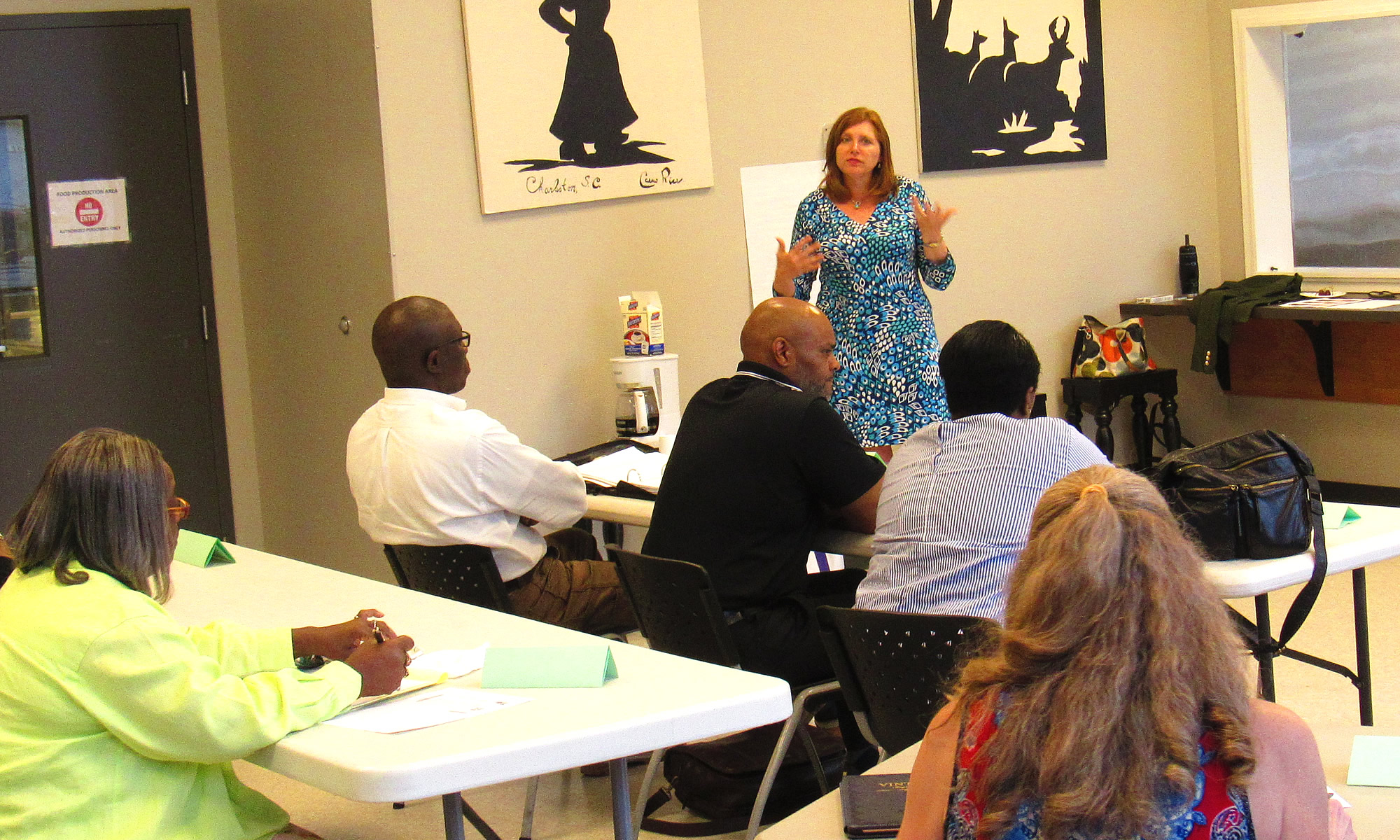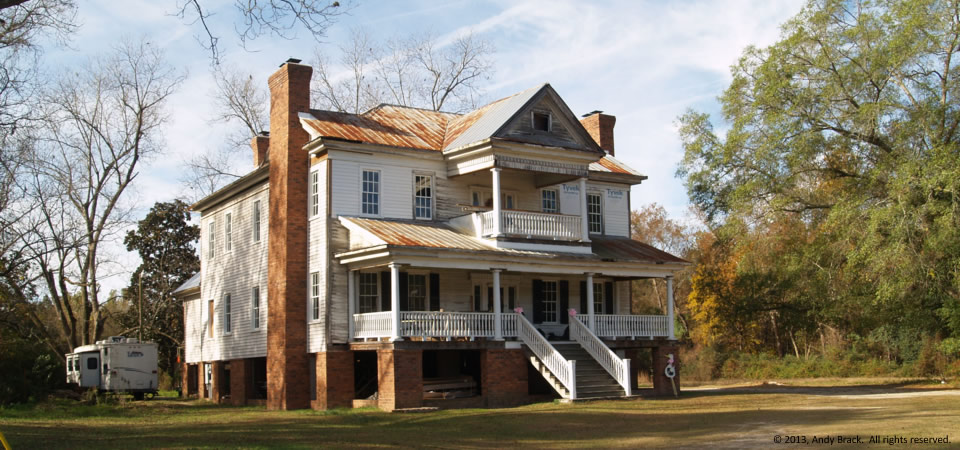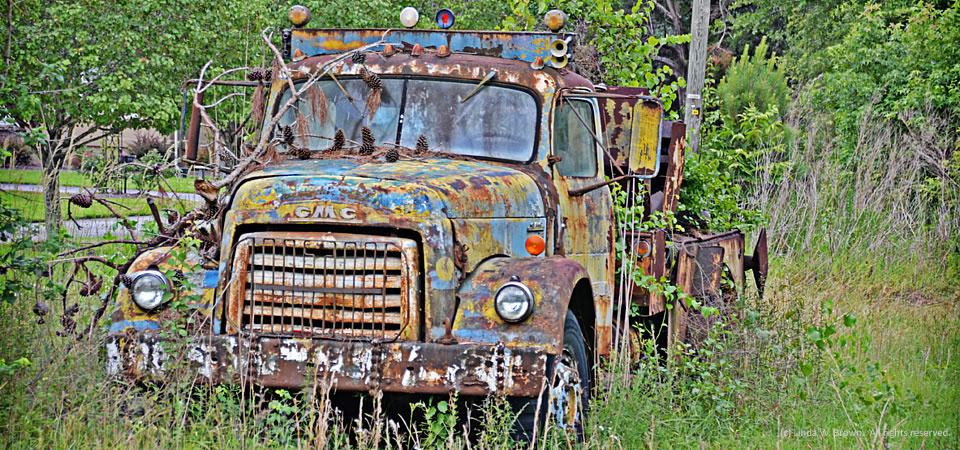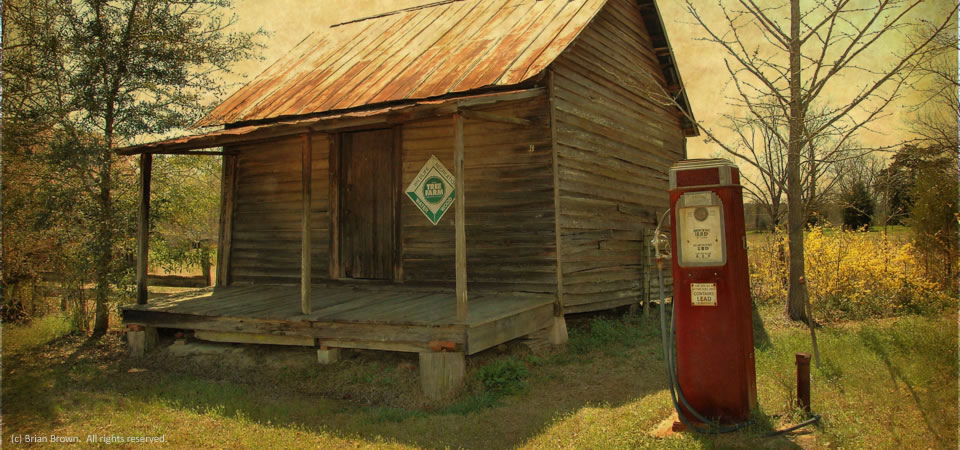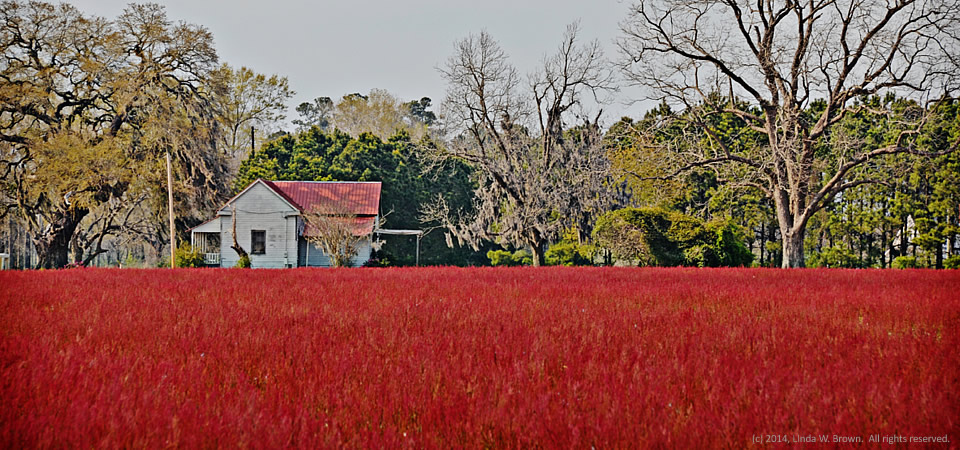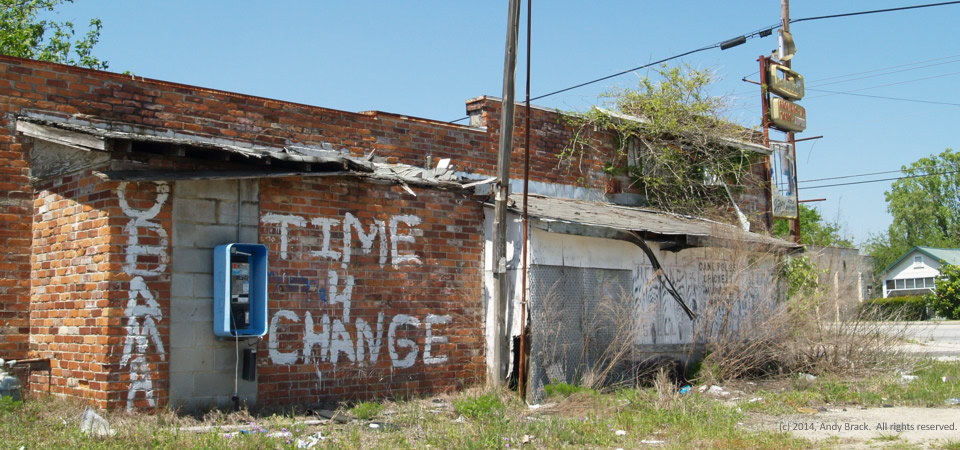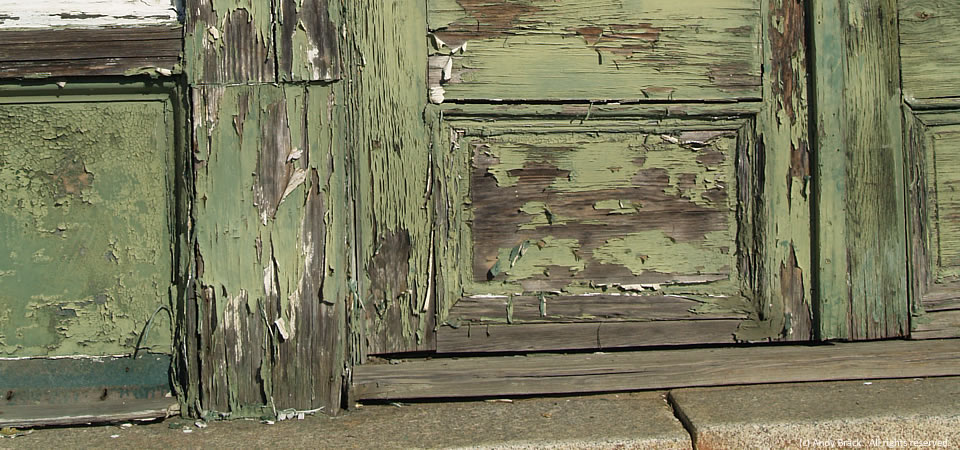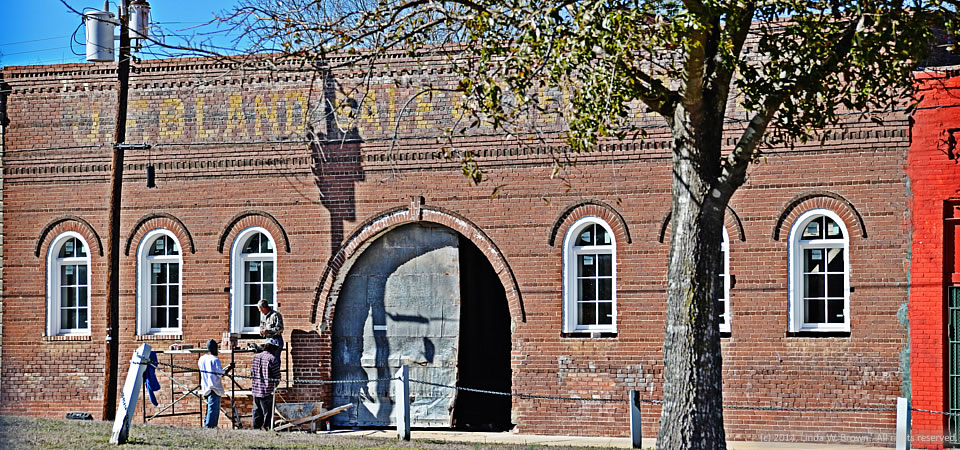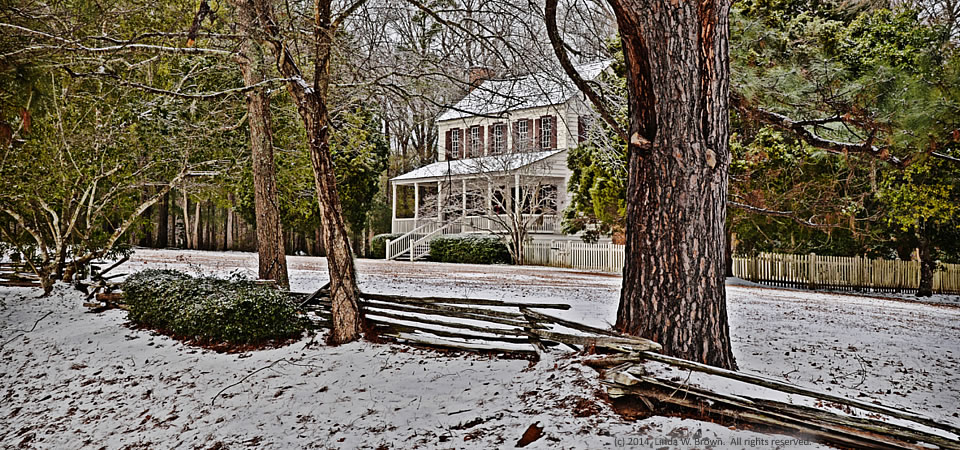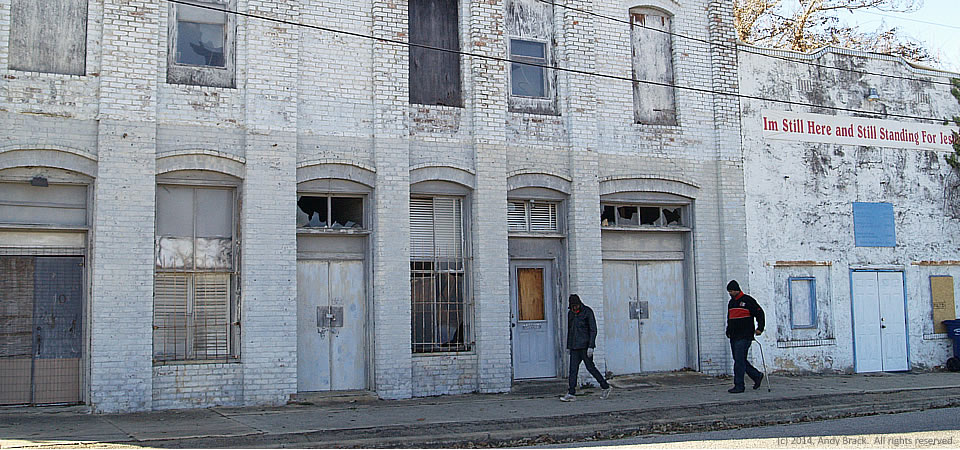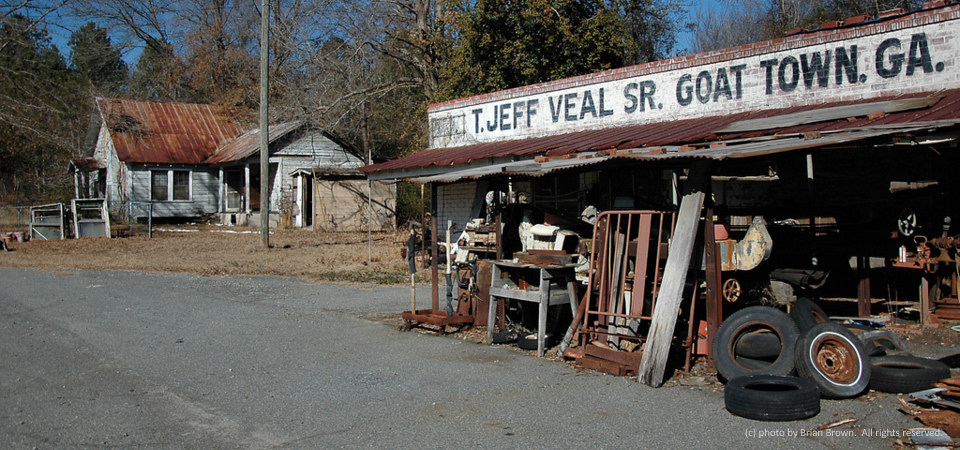
Better South President Andy Brack remembers seeing the “Goat Man” as a boy when in the back seat of a station wagon traveling between his father’s country cousins in Allentown, Ga., to nearby Macon, where his grandparents lived. You’d see him pushing a wagon filled with all sorts of junk. He was, in a word, a “character.”
VanishingSouthGeorgia.com photographer Brian Brown has this to say about the photo he took in 2013 of the odd Washington County landmark: “Goat Town isn’t really a town and it never was, though you can locate it on a good map. It’s just down the hill from Deepstep, whose iconic old store is also associated with the Veal family. T. Jeff Veal III, who uses his grandfather’s old country store as a workshop to build custom furniture, explained to me that a large herd of goats was kept around the corner in years gone by and the name just stuck. I’ve been here a couple of times and it never ceases to amaze me; it’s widely popular with Georgia’s backroads photographers.”
Photo is copyrighted by Brian Brown. All rights reserved.
